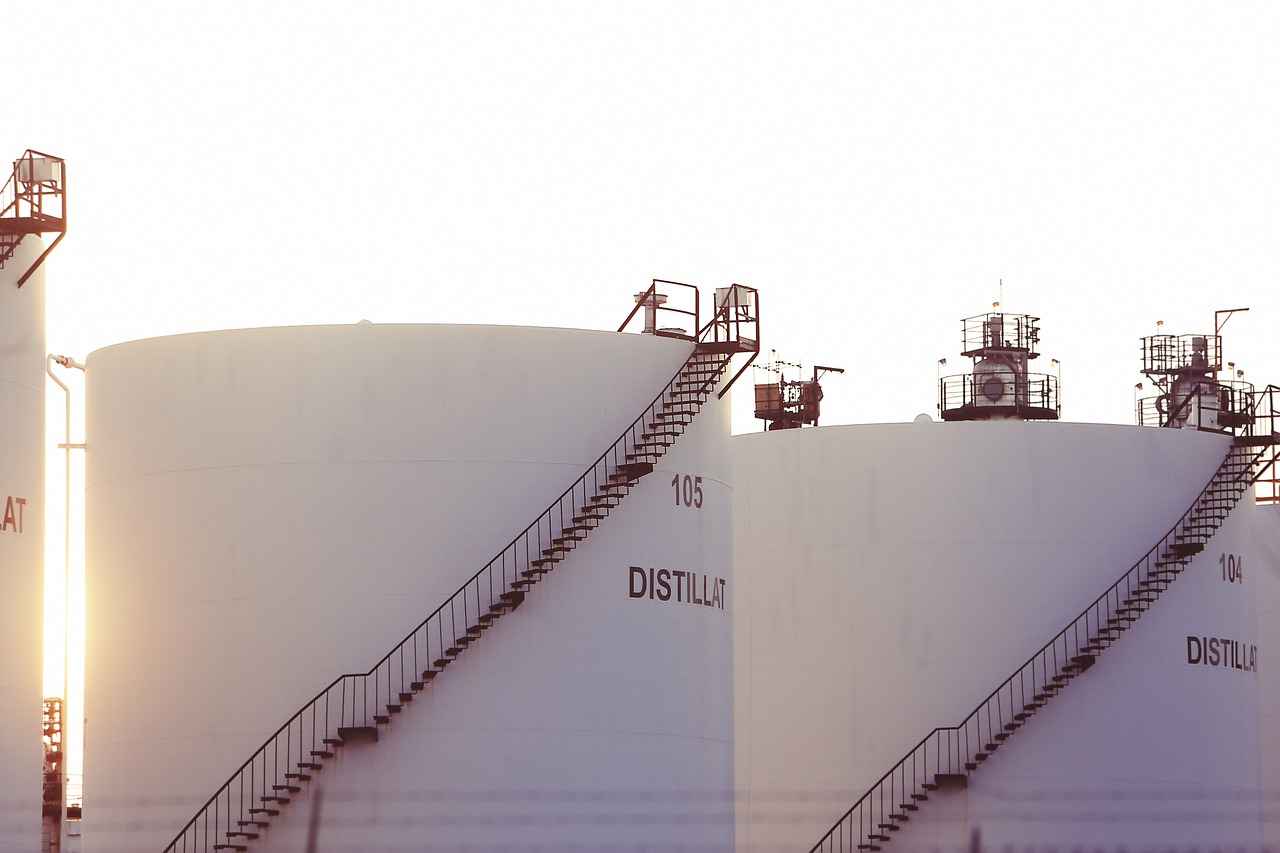This article provides an in-depth look at the time required to pump a septic tank, the significance of regular maintenance, and crucial insights into septic systems for homeowners. Understanding these elements is essential for maintaining a healthy and efficient septic system.
What is a Septic Tank and How Does It Work?
A septic tank is a vital component of a wastewater treatment system. It functions by separating solids from liquids, allowing the liquid waste to flow into a drain field, where it is naturally filtered through the soil. The tank typically consists of a large, watertight container buried underground. Regular maintenance is essential to ensure that the system operates efficiently and to prevent costly repairs.
How Often Should You Pump Your Septic Tank?
Regular pumping is crucial for the longevity of your septic system. Experts recommend that homeowners should pump their septic tank every 3 to 5 years, depending on several factors such as household size, tank size, and usage patterns. Understanding these factors can help you determine the best schedule for your specific needs.
- Household Size: More occupants typically mean more waste and a quicker fill-up of the tank.
- Water Usage: High water consumption can lead to more frequent pumping needs.
- Tank Condition: Older or poorly maintained systems may require more frequent attention.
Signs That Your Septic Tank Needs Pumping
Recognizing the warning signs of a full septic tank is vital for preventing costly repairs. Common indicators include:
- Slow drains throughout the house.
- Unpleasant odors around the septic tank area.
- Pooling water in the yard above the drain field.
What Happens During the Pumping Process?
Understanding the pumping process can alleviate concerns for homeowners. During the service, a professional will:
- Locate and access the septic tank.
- Use a vacuum truck to remove the sludge and scum from the tank.
- Inspect the tank for any signs of damage.
Preparation for Pumping
Proper preparation can streamline the pumping process. Homeowners should ensure that the area around the septic tank is clear of debris and accessible for the service vehicle. Additionally, informing the service provider about any previous issues can help them address potential problems more effectively.
Post-Pumping Care and Maintenance
After pumping, maintaining your septic system is crucial. Here are some practical tips:
- Avoid flushing non-biodegradable items.
- Limit the use of harsh chemicals that can disrupt the bacterial balance.
- Regularly inspect the drain field for any signs of failure.
Cost Factors for Pumping a Septic Tank
The cost of septic tank pumping can vary significantly based on several factors. On average, homeowners can expect to pay between $200 and $500 for a standard pumping service. However, this can increase depending on:
- Regional Variations: Prices may vary by location due to labor costs and local regulations.
- Additional Services: If repairs or maintenance are required during pumping, additional fees may apply.
Understanding the time it takes to pump a septic tank and the importance of regular maintenance can help homeowners avoid costly repairs and ensure their septic systems function smoothly.

What is a Septic Tank and How Does It Work?
Understanding the function of a septic tank is crucial for homeowners. This section delves into the basic components and processes involved in septic systems, ensuring proper waste management. A septic tank is an underground wastewater treatment system that is commonly used in rural areas where centralized sewer systems are not available. It plays an essential role in treating and disposing of household sewage.
At its core, a septic system consists of several key components:
- Septic Tank: This is a watertight container that holds sewage for a specific period, allowing solids to settle at the bottom and liquids to flow out.
- Drain Field: Also known as a leach field, this area is where the liquid waste is dispersed into the soil for further treatment.
- Soil: The soil acts as a natural filter, breaking down harmful bacteria and nutrients before they reach groundwater.
The functioning of a septic tank involves several important processes:
- Collection: Wastewater from the home flows into the septic tank through a single pipe.
- Separation: Inside the tank, solids settle to the bottom, forming a sludge layer, while lighter materials like fats and oils float to the top, creating a scum layer.
- Digestion: Anaerobic bacteria in the tank break down the organic matter, reducing the volume of solids.
- Dispersal: The liquid effluent exits the tank and enters the drain field, where it is further treated by the soil.
It is essential for homeowners to regularly maintain their septic systems to ensure they function effectively. Neglecting maintenance can lead to system failure, resulting in costly repairs and environmental hazards. Homeowners should be aware of common signs that indicate their septic tank may need pumping, such as:
- Slow drains or backups in the home
- Unpleasant odors near the septic tank
- Pooling water in the drain field area
Regular inspections and pumping, typically every 3 to 5 years, are recommended to prevent issues and prolong the lifespan of the septic system. By understanding how a septic tank works and the importance of proper maintenance, homeowners can take proactive steps to ensure their waste management system remains efficient and effective.

How Often Should You Pump Your Septic Tank?
Understanding the importance of regular pumping for your septic tank is crucial for maintaining its longevity and efficiency. A well-maintained septic system can serve your household effectively for many years, but neglecting it can lead to costly repairs and environmental hazards. This section outlines the recommended pumping frequency based on various factors, ensuring you have the knowledge to keep your system in optimal condition.
Recommended Pumping Frequency
The general guideline for pumping your septic tank is every 3 to 5 years. However, this frequency can vary based on several key factors:
- Household Size: A larger household generates more waste, which can fill the tank more quickly. For families of four or more, consider pumping every 3 years.
- Tank Size: The size of your septic tank plays a significant role in how often it should be pumped. A larger tank can hold more waste and may require less frequent pumping.
- Usage Patterns: If your household has high water usage due to frequent laundry, long showers, or running multiple appliances simultaneously, you may need to pump more often.
Factors Influencing Pumping Frequency
Several additional factors can impact how often your septic tank needs pumping:
- Type of Waste: If your household disposes of non-biodegradable items or excessive food waste, this can lead to faster buildup in the tank.
- System Age: Older systems may require more frequent pumping due to wear and tear. Regular inspections can help assess the condition.
- Maintenance History: If your septic tank has been well-maintained over the years, it may not require pumping as frequently as one that has been neglected.
Signs Your Septic Tank Needs Pumping
Being aware of the signs that indicate your septic tank is full can save you from major issues. Look for:
- Slow drains or backups in your plumbing.
- Unpleasant odors around the tank area.
- Pooling water or lush green grass over the drain field.
Conclusion
In summary, regular septic tank pumping is essential for maintaining a healthy and efficient system. By considering factors such as household size, tank size, and usage patterns, homeowners can determine the best pumping schedule for their needs. Keeping an eye out for warning signs will also help prevent costly repairs and ensure the longevity of your septic system. Regular maintenance not only protects your investment but also safeguards the environment.
Factors Influencing Pumping Frequency
When it comes to maintaining a healthy septic system, understanding the factors that influence how often you need to pump your septic tank is essential. Regular pumping is critical to prevent system failures and costly repairs. Several key factors play a role in determining the ideal pumping frequency, including household size, water usage, and the condition of the tank.
The size of your household is one of the most significant factors affecting how often you should pump your septic tank. A larger family generates more waste and uses more water, which means the tank fills up more quickly. For instance, if you have four or more residents, you may need to pump your tank every 3 to 5 years. In contrast, a smaller household of two may only require pumping every 4 to 6 years.
Your daily water usage also plays a crucial role in determining pumping frequency. High water consumption from activities such as long showers, washing machines, and dishwashers can significantly impact the septic tank’s capacity. If your household practices water conservation, you may extend the time between pumpings. Implementing low-flow fixtures and being mindful of water use can help reduce the frequency of necessary pumpings.
The age and overall condition of your septic system are vital considerations. Older tanks or those that have not been regularly maintained may require more frequent pumping. If your system shows signs of wear or has had previous issues, it’s wise to schedule pumping more often—potentially every 1 to 3 years. Regular inspections can help identify potential problems before they escalate.
- Type of Waste: The type of waste being disposed of can also affect how quickly your tank fills up. For example, disposing of non-biodegradable items can lead to clogs and necessitate more frequent pumping.
- Seasonal Changes: During certain seasons, such as summer, when families may have guests or engage in outdoor activities, water usage may increase, impacting the tank’s pumping schedule.
- Maintenance History: A well-maintained septic system will generally require less frequent pumping. Keeping up with regular maintenance can extend the life of your system.
Understanding these factors allows homeowners to make informed decisions about their septic system care. Regular monitoring of water usage and household size, along with maintaining the tank’s condition, can help prevent unexpected failures and ensure a smoothly operating septic system.
Household Size and Water Usage
Understanding the dynamics of household size and water usage is essential for maintaining an efficient septic system. The relationship between the number of residents in a home and their daily water consumption can significantly affect the performance of a septic tank. This section will explore how these factors influence septic tank management and pumping schedules.
Every household has a unique water usage pattern, influenced by the number of residents, lifestyle choices, and specific needs. Generally, a household with more occupants will generate a higher volume of wastewater. This increased flow can lead to a quicker accumulation of solids in the septic tank, necessitating more frequent pumping. For example, a family of four may require pumping every three to five years, while a household of two might only need it every five to seven years.
To better understand this relationship, consider the following key factors:
- Daily Water Usage: The average person uses about 80-100 gallons of water per day. Multiply this by the number of residents to estimate daily water input into the septic system.
- Appliance Usage: The use of water-intensive appliances, such as washing machines and dishwashers, can significantly increase water consumption. Households that frequently use these appliances should monitor their septic system more closely.
- Seasonal Variations: Water usage can vary seasonally. For example, during summer months, families may use more water for gardening, filling pools, or hosting guests, which can lead to increased septic tank loads.
- Waste Composition: The type of waste generated also influences septic tank performance. High volumes of food waste, grease, or non-biodegradable materials can lead to faster tank filling and require more frequent pumping.
Homeowners should be proactive in monitoring their water usage and understanding how it correlates with their septic system’s health. Regularly checking for signs of septic tank issues, such as slow drains or foul odors, can help identify when pumping may be necessary. By keeping track of household size and water consumption habits, homeowners can make informed decisions regarding their septic maintenance.
In addition to managing water usage, it’s important to consider the age and condition of the septic system. Older systems may not handle increased water flow as efficiently as newer installations, leading to potential backups and costly repairs. Homeowners should consult with a septic professional to assess their system’s capacity and ensure it meets their household’s needs.
Ultimately, understanding the interplay between household size and water usage is vital for effective septic system management. By recognizing how these factors impact septic tank performance, homeowners can better gauge their pumping needs and maintain a healthy waste management system.
Age and Condition of the Septic System
Understanding the age and condition of your septic system is crucial for effective maintenance. Older systems may require more frequent attention, and this can significantly influence your pumping schedules. The following insights will help homeowners grasp the importance of monitoring their septic system’s age and maintenance history.
As a septic system ages, its components can deteriorate. This deterioration may lead to reduced efficiency and increased likelihood of failure. For instance, older tanks often have less robust materials that can corrode or crack over time. Consequently, homeowners should consider the following factors:
- Material Composition: Older septic tanks may be made from materials like concrete or steel, which can degrade faster than modern alternatives like plastic or fiberglass.
- Design and Capacity: Many older systems were designed for smaller households. If your family size has increased, the existing system may not handle the additional load effectively.
- Maintenance History: A well-maintained septic system can last for decades. Regular inspections and timely pumping can extend the life of your system. Conversely, neglect can lead to more frequent pumping needs.
Another crucial aspect is the frequency of pumping. Older systems generally require more frequent pumping compared to newer ones. This is due to the accumulation of solids that can build up more quickly in aging systems. Homeowners should consult with professionals to establish a tailored pumping schedule based on the system’s age and condition.
Moreover, signs of distress in an aging septic system can manifest in various ways:
- Slow Drains: If sinks or toilets are draining slowly, this could indicate a full tank or problems within the system.
- Unpleasant Odors: Foul smells around your yard or home may suggest that your septic system is failing.
- Water Pooling: Puddles or wet areas in your yard can indicate a leak or overflow from the septic tank.
Homeowners should also be aware that local regulations may mandate more frequent inspections for older systems. In some regions, systems older than a certain number of years may require annual evaluations. This can help identify potential issues before they escalate into costly repairs.
In summary, the age and condition of your septic system are pivotal in determining your maintenance needs. By understanding these factors, homeowners can take proactive steps to ensure their systems remain functional and efficient. Regular inspections and timely pumping can save you from unexpected failures and expensive repairs, making it essential to stay on top of your septic system’s health.
Signs That Your Septic Tank Needs Pumping
Understanding when your septic tank needs pumping is crucial for maintaining a healthy home environment and preventing expensive repairs. Ignoring the warning signs can lead to severe plumbing issues, unpleasant odors, and even environmental hazards. This section outlines the most common indicators that homeowners should be vigilant about.
- Slow Drains: If you notice that your sinks, toilets, and bathtubs are draining more slowly than usual, it may indicate that your septic tank is nearing its capacity. This is often one of the first signs that homeowners experience.
- Unpleasant Odors: A foul smell around your property, especially near the drain field, is a strong indicator that your septic tank may be full or malfunctioning. These odors can be a sign of sewage backing up or leaking.
- Pooling Water: If you see pools of water or soggy areas in your yard, particularly over the drain field, this could mean that your septic tank is overflowing. This standing water is not only a nuisance but also a potential health hazard.
- Gurgling Sounds: Unusual gurgling noises in your plumbing, particularly after flushing a toilet or running water, can signal that your septic tank is struggling to manage waste effectively.
- Bright Green Grass: If you notice that the grass over your septic drain field is greener and growing faster than the surrounding areas, it could be an indication that your tank is leaking and the soil is receiving excess nutrients.
- Frequent Backups: Regularly experiencing backups in your plumbing system is a clear sign that your septic tank needs immediate attention. This is a serious issue that should not be ignored.
Recognizing these signs early can save you from more extensive damage and costly repairs. It is advisable to schedule regular inspections and maintenance for your septic system to ensure it operates efficiently. Homeowners should also keep a record of their septic tank’s pumping history and any signs of issues to discuss with their service provider.
In summary, being proactive about your septic system is essential. By understanding the warning signs that indicate your tank may need pumping, you can take timely action to maintain the health of your home and avoid potential environmental hazards.

What Happens During the Pumping Process?
Understanding the pumping process can alleviate concerns for homeowners. The septic tank pumping process is essential for maintaining a healthy and efficient septic system. This section outlines the steps involved in septic tank pumping, what to expect during the service, and how to prepare for it.
Step-by-Step Overview of the Pumping Process
- Initial Inspection: Before any pumping occurs, a professional will conduct an initial inspection of the septic tank. This includes checking for visible signs of damage, leaks, or blockages.
- Locating the Tank: The technician will locate the access ports of the septic tank, which may require digging if they are not easily accessible.
- Connecting the Pump: Once the tank is located, the technician will connect a vacuum pump to the access port. This pump is specifically designed to remove waste and sludge from the tank.
- Pumping the Tank: The actual pumping process involves extracting the waste material. This can take anywhere from 30 minutes to several hours, depending on the tank’s size and the amount of waste present.
- Cleaning the Tank: After pumping, the technician may clean the inside of the tank to remove any remaining sludge or buildup, ensuring optimal performance.
- Inspection of Components: The technician will also inspect the tank’s components, such as baffles and filters, to ensure they are functioning correctly.
- Final Checks: Lastly, the technician will perform a final check to ensure everything is in order before sealing the tank back up.
What to Expect During the Service
Homeowners can expect the pumping process to be relatively straightforward. The technician will arrive with the necessary equipment and will communicate each step along the way. It’s important to note that while the process can be messy, professionals are trained to handle waste safely and efficiently.
How to Prepare for Septic Tank Pumping
- Clear the Area: Ensure that the area around the septic tank is clear of obstacles, such as plants, furniture, or debris, to allow easy access for the technician.
- Provide Access: If your septic tank is buried, be prepared for some digging. Mark the location of the tank if you know it, or inform the technician if there are any known issues.
- Limit Water Usage: Prior to pumping, try to limit water usage in your home for at least 24 hours. This helps ensure that the tank is not overly full, making the pumping process more efficient.
Post-Pumping Considerations
After the pumping service, it’s crucial to maintain your septic system properly. Follow any recommendations provided by the technician, such as waiting a few hours before using water. Regular maintenance and mindful usage can prolong the life of your septic system and prevent costly repairs.
In summary, understanding the pumping process not only prepares homeowners for the service but also empowers them to take better care of their septic systems. By following the outlined steps and recommendations, homeowners can ensure their septic systems function efficiently for years to come.
Preparation for Pumping
When it comes to maintaining a septic system, proper preparation is key to ensuring a smooth and efficient pumping process. Homeowners can take several proactive steps to streamline the service, enhancing both safety and effectiveness. In this section, we will explore essential preparations that can be made before a septic tank pumping.
Preparing your property for septic tank service is crucial for several reasons. First, it can significantly reduce the time required for the pumping process. Second, it helps prevent any potential damage to your landscaping or property. Lastly, proper preparation ensures the safety of both the service personnel and your family.
- Locate the Septic Tank: The first step in preparation is to identify the exact location of your septic tank. This information is vital for the service technician to access the tank quickly.
- Clear the Area: Remove any obstacles around the septic tank, such as plants, furniture, or debris. A clear area allows for easier access and reduces the risk of damage during the pumping process.
- Mark the Location: If your septic tank is buried or obscured, consider marking its location with flags or stakes. This will help the technician locate it quickly and efficiently.
- Inform the Service Provider: Communicate any relevant details about your septic system to the service provider. This includes the tank’s age, last pumping date, and any known issues.
- Avoid Water Usage: In the days leading up to the pumping service, minimize water usage. This helps ensure that the tank is not overly full, making the pumping process more effective.
- Check for Signs of Problems: Before the service, be on the lookout for any signs that your septic system may have issues, such as slow drains or unpleasant odors. Informing the technician about these signs can help them address potential problems more effectively.
Once you’ve prepared your property, it’s important to understand what happens during the pumping process. The technician will arrive with specialized equipment to pump out the contents of your septic tank. They will first assess the tank’s condition, then connect hoses and begin the pumping process. The entire service usually takes between 30 minutes to a few hours, depending on the tank’s size and condition.
After the pumping is completed, it’s essential to follow up with proper maintenance. This includes monitoring your septic system’s performance and scheduling regular inspections. Maintaining a healthy septic system can prevent costly repairs down the road and ensure its longevity.
By taking the time to prepare your property for septic tank pumping, you can help ensure a more efficient and safe experience. Each step you take contributes not only to the success of the service but also to the overall health of your septic system.
Post-Pumping Care and Maintenance
After your septic tank has been pumped, it is essential to focus on . This process not only ensures the longevity of your septic system but also helps prevent future issues that could lead to costly repairs. Here are some practical tips for homeowners to maintain their systems effectively after service.
- Monitor Water Usage: After pumping, it’s crucial to be mindful of your household’s water consumption. Excessive water use can overwhelm your septic system, leading to backups and failures. Aim to spread out laundry and dishwashing over several days instead of doing them all at once.
- Avoid Flushing Non-Biodegradable Items: Make it a strict rule in your household to avoid flushing items like wipes, feminine hygiene products, and other non-biodegradable materials. These items can clog your system and lead to significant issues.
- Regular Inspections: Schedule regular inspections of your septic system, ideally once a year. A professional can help identify potential issues before they become serious problems. Inspections can also include checking for leaks, checking the tank’s condition, and ensuring that the drain field is functioning properly.
- Maintain Your Drain Field: The drain field is a critical part of your septic system. Keep it free from heavy equipment, vehicles, and excessive foot traffic. This area should remain clear of any landscaping that could impede its function, such as trees and shrubs with deep roots that can invade the system.
- Use Enzyme Treatments: Consider using enzyme treatments periodically to help break down solids in your septic tank. These products can assist in maintaining the balance of bacteria necessary for proper waste breakdown.
- Document Maintenance Activities: Keep a detailed log of all maintenance activities, including pumping dates and any repairs or inspections. This documentation can be invaluable for future reference and can help in identifying patterns that may indicate problems.
In addition to these tips, homeowners should also be aware of the signs that may indicate their system is not functioning properly. Some common indicators include slow drains, foul odors, and standing water above the drain field. If you notice any of these signs, it is crucial to contact a professional immediately to prevent further damage.
By following these practical tips and maintaining a proactive approach, homeowners can ensure their septic systems function efficiently for years to come. Regular care and attention not only protect your investment but also contribute to a healthier environment and community.

Cost Factors for Pumping a Septic Tank
The cost of septic tank pumping can vary widely, making it essential for homeowners to understand the factors that influence pricing. This knowledge not only helps in budgeting for this necessary maintenance task but also ensures that you receive fair pricing for the service. Below, we delve into the various elements that can affect the cost of septic tank pumping.
Several key factors play a significant role in determining the overall cost of septic tank pumping:
- Geographical Location: The region where you live can greatly impact service costs. Urban areas typically have higher prices due to increased demand and operational costs, while rural areas may offer more competitive rates.
- Size of the Septic Tank: Larger tanks require more time and resources to pump, which can increase the cost. Homeowners should be aware of their tank’s capacity to better understand potential expenses.
- Accessibility: If your septic tank is difficult to access, such as being buried deep or located far from the service vehicle, additional labor charges may apply. Clear access points can help reduce costs.
- Condition of the System: If the septic tank is in poor condition or if there are additional issues such as clogs or leaks, this may necessitate extra services that can drive up the price.
The cost of septic tank pumping can differ significantly from one region to another. For instance, homeowners in metropolitan areas might pay between $300 to $600 for pumping, while those in rural areas might find prices ranging from $200 to $400. It’s advisable to compare prices from multiple service providers in your area to ensure you’re getting a competitive rate.
When scheduling a septic tank pumping, homeowners should be aware that additional services may incur extra costs. Common additional services include:
- Inspections: Some companies offer inspections during the pumping process to assess the overall health of the septic system, which can add to the final bill.
- Repairs: If any issues are discovered during the pumping, such as broken pipes or a failing drain field, repairs may be necessary, leading to additional charges.
- Emergency Services: If you require immediate service due to a backup or overflow, emergency fees may apply, which can significantly increase the total cost.
To effectively budget for septic tank pumping, consider the following tips:
- Regular Maintenance: Schedule regular pumping every 3 to 5 years to avoid costly repairs associated with neglect.
- Get Quotes: Obtain quotes from multiple service providers and inquire about any potential additional fees upfront.
- Plan for Emergencies: Set aside a budget for unexpected repairs or emergency services to mitigate financial strain.
In summary, understanding the cost factors associated with septic tank pumping can save homeowners time and money in the long run. By considering regional pricing, the size and condition of the tank, and any potential additional services, you can make informed decisions about your septic system maintenance.
Regional Variations in Pricing
When it comes to septic tank pumping services, understanding the cost variations based on geographical location is crucial for homeowners. These regional differences can significantly impact the overall expenses associated with maintaining your septic system.
The cost of septic tank pumping is influenced by several regional factors, including local labor rates, cost of living, and the availability of service providers. In urban areas, for instance, higher demand for septic services can lead to increased prices compared to rural regions where fewer providers may offer competitive rates.
In regions with a higher cost of living, service providers often charge more to cover their expenses. This can include everything from wages to equipment maintenance. Therefore, homeowners in cities or affluent areas may find themselves paying a premium for septic tank pumping services.
Labor rates can vary widely across different states and even within regions. For example, a service provider in a metropolitan area may charge significantly more per hour than one in a rural setting. This discrepancy can affect the total cost of septic tank pumping, making it essential for homeowners to shop around and compare prices.
The number of available septic service providers in your area can also dictate pricing. In regions with limited options, homeowners may have to pay higher rates due to less competition. Conversely, areas with multiple service providers often see lower prices due to competitive bidding.
Interestingly, the demand for septic tank pumping services can fluctuate with the seasons. During peak times, such as spring and summer when homeowners are more likely to host gatherings, prices may rise due to increased demand. Understanding these seasonal trends can help homeowners plan their pumping schedules more effectively.
To ensure you are getting the best price for septic tank pumping in your area, consider the following strategies:
- Research Local Providers: Look for reviews and testimonials to gauge the reputation of different service providers.
- Request Multiple Quotes: Contact several companies to compare prices and services offered.
- Ask About Discounts: Some companies may offer discounts for first-time customers or for scheduling services during off-peak times.
It’s important to note that the base price for septic tank pumping may not include additional fees for services such as inspections or repairs. Homeowners should inquire about any potential extra costs upfront to avoid surprises when the bill arrives.
In summary, the cost of septic tank pumping services can vary significantly based on geographical location, local labor rates, availability of providers, and seasonal demand. By understanding these factors, homeowners can make informed decisions and budget effectively for this essential maintenance task.
Additional Services and Fees
When scheduling septic tank service, homeowners often focus on the primary task of pumping. However, it is essential to recognize that additional services may be required, leading to unexpected costs. Understanding these potential extra fees can help homeowners plan their budgets effectively and avoid surprises.
During the pumping process, several additional services may be necessary, depending on the condition of your septic system. Here are some common extras that homeowners should consider:
- Inspection Services: A thorough inspection of the septic system can reveal underlying issues such as leaks or cracks. This service often incurs an additional fee but can save homeowners from costly repairs later.
- Drain Field Maintenance: If the drain field is saturated or not functioning correctly, it may require maintenance or repairs. This could involve aeration or replacement, which can significantly increase costs.
- Grease Trap Cleaning: For homes with grease traps, cleaning these can be necessary during septic service. Neglecting this can lead to clogs and backups, necessitating further intervention.
- Root Removal: Tree roots can invade septic systems, causing blockages. If detected during pumping, removing these roots is crucial and may add to the overall cost.
Understanding the reasons behind additional costs can help homeowners make informed decisions. Here are some factors that can contribute to these extra fees:
- Complexity of the System: Older or more complex septic systems may require specialized equipment and expertise, leading to higher service costs.
- Location: Geographical factors can influence pricing. For example, remote locations may incur travel fees, while urban areas may have higher service rates.
- Time of Service: Emergency or after-hours services typically come with premium charges. Homeowners should consider scheduling routine maintenance during regular business hours to minimize costs.
To avoid unexpected expenses, homeowners should take proactive steps:
- Conduct Regular Inspections: Scheduling regular inspections can identify potential issues early, allowing for timely repairs and reducing overall costs.
- Understand Your System: Familiarize yourself with the layout and components of your septic system. Knowing its age and condition can help anticipate future needs.
- Discuss with Your Service Provider: Before scheduling service, communicate with your septic service provider about any concerns. They can advise on potential additional services based on your system’s condition.
In summary, while the primary cost of pumping a septic tank is essential to consider, being aware of potential additional services and their associated fees is equally important. By understanding these factors and preparing accordingly, homeowners can ensure their septic system remains functional and avoid unexpected financial burdens.
Frequently Asked Questions
- How long does it take to pump a septic tank?
Pumping a septic tank typically takes about 30 minutes to 2 hours, depending on the tank size and the amount of waste inside. Factors like accessibility and the pumping service’s efficiency can also play a role.
- How often should I pump my septic tank?
Generally, it’s recommended to pump your septic tank every 3 to 5 years. However, this can vary based on household size, tank size, and water usage. Larger households or those using more water may need to pump more frequently.
- What are the signs that my septic tank needs pumping?
Watch for signs like slow drains, gurgling sounds in plumbing, or foul odors around the tank area. If you notice any of these, it might be time to schedule a pumping service.
- What happens during the septic tank pumping process?
During pumping, a professional will use a vacuum truck to remove sludge and scum from your tank. They’ll inspect the tank for any issues and ensure everything is functioning correctly.
- Are there additional costs associated with septic tank pumping?
Yes, additional costs may arise if repairs are needed or if the tank is particularly full. Always ask your service provider about potential extra fees before scheduling.




